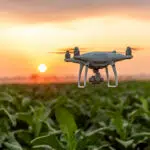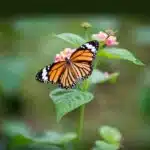National Start Seeing Monarchs Day is celebrated on the first Saturday of May every year and this year, it falls on May 2. It’s all about raising awareness of the environmental importance of the monarch butterflies and reminding the general population of the issues related to the imminent extinction faced by this species.
History of National Start Seeing Monarchs Day
Monarch butterflies can be found all around North America, mainly concentrated in the eastern parts of the United States. They are considered the most popular species of butterflies in the country. These butterflies migrate every year around late summer and fall. The ones born in the northern and central U.S. and Canada travel all the way to Florida and Mexico and the ones born in the western area migrate to southern California as well. There are also monarchs living in the International Space Station!
Butterflies have a life cycle of four phases. The first is the egg, which is laid under young leaves of milkweed. It takes them three to eight days to turn into larva, which is the second phase of the life cycle. Larvae, also known as caterpillars, are the stage where the species grows the most and feeds very well to be able to form the pupa. The third stage of the life cycle is the pupa, which is the phase where the caterpillar stays within its chrysalis for eight to 15 days before it finally emerges and turns into a beautiful butterfly.
A monarch butterfly can live up to eight months by feeding off milkweed and other nectar plants, which makes them one of the many animal species responsible for pollinating plants and flowers all around. Once they reach sexual maturity and can be considered adult butterflies, it takes them a while to begin their migration process, which happens only once overwintering is complete. Migration takes four different generations to finally be completed.
National Start Seeing Monarchs Day timeline
Carl Linnaeus describes and classifies the monarch butterfly in his book “Systema Naturae.”
Pieter Cramer describes the southern monarch butterfly, found in South America.
Jean-Baptiste Godart describes the Jamaican monarch butterfly.
In Ontario, Canada, the monarch butterfly is considered a species of special concern.
National Start Seeing Monarchs Day FAQs
What month do you see monarch butterflies?
In the United States, monarchs usually emerge through April before flying north as adults.
What does it mean when you see monarchs?
A lot of people see butterflies as a nod to change and transformation. To cross paths with a butterfly can mean that something big is about to change in your life!
How far can a monarch butterfly fly in one day?
Most monarchs travel somewhere between 50 and 100 miles a day!
National Start Seeing Monarchs Day Activities
Go see a monarch
If you’re within the area where the butterflies might be passing through, why not try to spot some of them outside and take a picture? Not only will it be a beautiful sight to behold, but you’ll get some cool shots for your social media account!
Post about it
Even if you didn’t get to take a beautiful photo yourself, why not post about the monarchs so all your friends can find out more about them. This can inspire them to go sight-hunting themselves?
Draw a monarch
Another great way to celebrate is to draw or paint a monarch butterfly and post it on social media. You could even put your beautiful creation up on the wall so everyone can be reminded of this special day!
5 Facts About Monarch Butterflies You’ll Love
They travel up to 3,000 miles
Monarch butterflies can travel up to 3,000 miles every year across the United States, all the way to Mexico!
They grow fast
Monarchs spend about two weeks in their caterpillar stage and grow an average of 2,700 times the weight they started out with!
They are quite big
When compared to the average butterfly, monarchs are quite big, growing to be just as big as a teacup!
They don’t live very long
The average lifespan of a monarch butterfly is seven months!
They have only one host plant
The only host plant, or plant they’re attracted to, is the milkweed!
Why We Love National Start Seeing Monarchs Day
It raises awareness
It’s not every day that we get to hear all about the wonderful world of monarch butterflies. So it’s great that we have an entire day dedicated to that!
It connects us to nature
We tend to feel disconnected from nature sometimes, especially if we live in a chaotic urban environment. This day reminds us to connect with the smallest parts of nature whenever we can!
It brings us together
What better way to get friends and family together than to go sight-hunting for some monarchs around town? Go ahead, take a trip and see what you can find!
National Start Seeing Monarchs Day dates
| Year | Date | Day |
|---|---|---|
| 2024 | May 4 | Saturday |
| 2025 | May 3 | Saturday |
| 2026 | May 2 | Saturday |



































